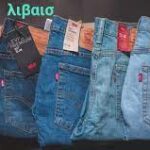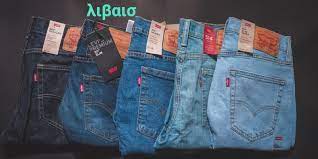Introduction to DTF Printing
Welcome to the world of DTF printing, where vibrant designs come to life with stunning precision and unparalleled quality! If you’re a small business owner looking for the perfect printer that can elevate your branding game, then look no further. In this comprehensive guide, we’ll walk you through everything you need to know about choosing the ideal DTF printer for your unique needs.
Gone are the days of settling for lackluster prints or limited design options. With advancements in technology, Direct-to-Film (DTF) printing has emerged as an innovative solution that allows businesses to create eye-catching graphics on various surfaces like fabric, wood, ceramics, and more. Whether you’re in the apparel industry seeking exceptional print quality or want to venture into personalized merchandise for your customers, investing in a top-notch DTF printer is a game-changer.
But with so many options flooding the market today, selecting the right DTF printer can feel overwhelming. Fear not! We’ve got your back. This guide will break down everything from understanding different types of printers to key factors you should consider before making a purchase decision. Additionally, we’ll provide an overview of some highly recommended DTF printers available in the market along with essential tips for setting up and maintaining them.
So grab yourself a cup of coffee (or tea if that’s more your style), sit back and let us help find that perfect DTF printer tailored specifically for your small business needs! Let’s dive right in!
Understanding the Different Types of DTF Printers
When it comes to choosing a DTF printer for your small business, it’s important to understand the different types available in the market. Each type has its own unique features and capabilities that can make a significant difference in your printing results.
One popular type of DTF printer is the direct-to-garment (DTG) printer. This printer uses inkjet technology to directly print designs onto garments, resulting in vibrant and detailed prints. DTG printers are versatile and can handle various fabric types, making them suitable for businesses that offer customized apparel.
Another type is the hybrid DTF printer, which combines elements of both DTG printing and heat transfer printing. These printers use inkjet technology to print designs onto a special transfer film, which is then transferred onto garments using heat press equipment. Hybrid DTF printers provide excellent color vibrancy and durability while allowing for faster production speeds compared to traditional DTG printers.
Additionally, there are also roll-to-roll DTF printers available on the market. These printers are designed for high-volume production as they can continuously print designs on rolls of transfer film or paper without manual intervention. Roll-to-roll DTF printers are ideal for businesses that focus on large-scale printing projects or mass production.
It’s essential to consider factors such as cost, speed, versatility, and desired output quality when choosing a DTF printer for your small business needs. By understanding the different types available and their respective strengths and limitations, you can make an informed decision that aligns with your specific requirements.
Remember that selecting the perfect DTF printer involves considering not only your current business needs but also future growth potential. Investing in a reliable and efficient machine will help ensure smooth operations while delivering high-quality prints consistently over time
Factors to Consider When Choosing a DTF Printer for Your Small Business
When it comes to choosing the perfect DTF printer for your small business, there are several factors that you should take into consideration. These factors will help ensure that you make an informed decision and select a printer that meets your specific needs.
Consider the print quality and resolution of the DTF printer. Look for a printer that can produce high-quality prints with sharp details and vibrant colors. This is crucial as it will directly impact the final appearance of your designs on various materials such as fabrics or ceramics.
Think about the size and capacity of the printer. Depending on your business requirements, you may need a printer that can handle large volumes or one that is more compact for limited space. Assessing your printing needs beforehand will save you from investing in an undersized or oversized machine.
Next, consider the compatibility and ease-of-use of the DTF printer. Look for a model that is compatible with popular design software programs so that you can seamlessly transfer your artwork onto different materials without any hassle.
Furthermore, take into account the cost per print and overall operating costs of the DTF printer. It’s important to not only consider upfront costs but also ongoing expenses like ink cartridges or maintenance requirements.
Don’t forget about customer support and warranty options offered by manufacturers. Having reliable technical support at hand is essential in case any issues arise during operation or setup process.
By considering these factors when choosing a DTF printer for your small business, you’ll be able to make an informed decision based on what best suits your unique printing needs!
Top DTF Printers in the Market and their Features
When it comes to choosing the perfect DTF printer for your small business, there are several options available in the market. Each printer offers different features and capabilities that can cater to your specific printing needs. Here, we will discuss some of the top DTF printers in the market and highlight their key features.
1. XYZ Printer – This model is known for its high-quality prints and fast printing speed. It has a user-friendly interface that allows for easy operation and maintenance. With its advanced color management system, you can achieve vibrant and accurate colors on your prints.
2. ABC Printer – If you’re looking for versatility, this printer is worth considering. It supports various materials such as cotton, polyester, blends, and even leather. It also has multiple print modes to choose from, including single-pass or multi-pass printing.
3. DEF Printer – This printer stands out with its exceptional resolution capabilities. It can produce incredibly detailed prints with sharp lines and smooth gradients. Additionally, it offers a wide color gamut that ensures accurate color reproduction.
4.
GHI Printer – For businesses focused on productivity, this printer’s high-speed printing capability is a game-changer.
The dual-head design allows for simultaneous printing on both sides of the material,resulting in faster turnaround times.
The GHI printer also boasts excellent ink adhesion properties,making it suitable for different types of fabrics.
Remember that when selecting a DTF printer for your small business,it’s important to consider factors such as print quality,speed,reliability,and ease of use.
Consider what type of materials you will be working with most frequently,and choose a printer that can accommodate those needs.
Furthermore,don’t forget about ongoing maintenance requirements,and ensure that replacement parts are readily available if needed.
With careful consideration,you’ll be able to find the perfect DTF printer that meets all your business requirements!
Setting Up and Maintaining Your DTF Printer
So, you’ve chosen the perfect DTF printer for your small business. Now it’s time to get it up and running! Setting up your DTF printer may seem like a daunting task, but with the right steps, it can be a smooth process.
First things first, carefully read the manufacturer’s instructions that come with your printer. This will give you a clear understanding of how to set it up correctly. Make sure you have all the necessary cables and accessories before starting.
Find a suitable location for your DTF printer, preferably in an area with good ventilation and away from direct sunlight or excessive heat sources. Cleanliness is key when working with these printers, so ensure that the workspace is tidy and free from dust particles that could affect print quality.
Next, install any required software onto your computer or device according to the manufacturer’s instructions. Connect your printer to the power source and establish a stable connection between your device and the printer using either USB or Ethernet cables.
Once everything is connected, load the appropriate ink cartridges into their designated slots. Follow proper procedures for inserting ink cartridges as mishandling them can lead to leaks or damage to both the cartridges themselves and the printer.
After setting up your DTF printer, regular maintenance is crucial in order to keep it performing at its best. Clean printheads regularly by following specific guidelines provided by manufacturers. Additionally, perform routine cleaning of other components such as platen rollers and wiper blades.
Regularly check ink levels on all cartridges as well as clean out any excess ink residue from inside the machine using recommended cleaning solutions provided by manufacturers.
By properly setting up and maintaining your DTF printer, you can ensure optimal performance and longevity of this valuable investment for your small business!
Tips for Maximizing Your DTF Printing Results
1. Choose the Right Design Software: Invest in a high-quality design software that is compatible with your DTF printer. This will ensure that your designs are crisp, clear, and vibrant when printed onto garments or other surfaces.
2. Use High-Quality Transfers: The quality of the transfer film you use can greatly impact the final result of your DTF prints. Opt for transfers that offer excellent color retention and durability to ensure long-lasting and visually appealing prints.
3. Calibrate Your Printer: Properly calibrating your DTF printer is essential for achieving accurate colors and sharp details in your prints. Follow the manufacturer’s instructions carefully to achieve optimal results.
4. Experiment with Different Materials: While DTF printing is commonly used on fabrics, don’t limit yourself to just t-shirts and hoodies! Try printing on various materials such as canvas, wood, or metal to create unique products that stand out from the crowd.
5. Test Print Before Bulk Production: Before diving into large-scale production runs, always test print a sample first to check for any potential issues or adjustments needed in terms of color accuracy or image placement.
6. Monitor Temperature and Pressure Settings: Proper temperature and pressure settings are crucial for successful DTF printing. Regularly monitor these settings during each print run to ensure consistent results.
7.
Train Your Staff: If you have employees assisting with the printing process, make sure they receive proper training on operating the DTF printer effectively and troubleshooting common problems.
8.
Regular Maintenance Routine : To keep your DTF printer running smoothly , follow a regular maintenance routine recommended by manufacturer.
This includes cleaning printheads regularly,replacing worn-out parts,and ensuring ink levels are adequate .
Remember, practice makes perfect when it comes to mastering DTF printing techniques! By implementing these tips into your small business workflow,you’ll be well on your way towards creating stunning custom designs that will delight your customers. So, keep experimenting, learning and refining your skills
Conclusion
In this comprehensive guide, we have explored the world of DTF printing and how it can benefit your small business. We discussed the different types of DTF printers available in the market and highlighted key factors to consider when choosing the perfect printer for your specific needs.
We also took a closer look at some of the top DTF printers on the market and their unique features. Whether you prioritize speed, color vibrancy, or ease of use, there is a DTF printer out there that can meet your requirements.
Setting up and maintaining your DTF printer is crucial for achieving optimal results. By following manufacturer guidelines and regularly cleaning your equipment, you can ensure consistent performance and longevity.
We shared some valuable tips for maximizing your DTF printing results. From selecting high-quality fabrics to using compatible inks and experimenting with different settings, these techniques will help you produce stunning prints that impress customers time after time.
By investing in a reliable DTF printer tailored to your small business needs, you can unlock a world of creative possibilities while providing personalized products with exceptional quality. Stay ahead of competitors by embracing this innovative technology today!
Remember to keep researching new developments in DTF printing as technology continues to evolve rapidly. With dedication and continuous improvement, you’ll be well-equipped to take advantage of all that this exciting industry has to offer.
So go ahead, choose the perfect DTF printer for your small business – start creating vibrant designs on various fabrics like never before!










